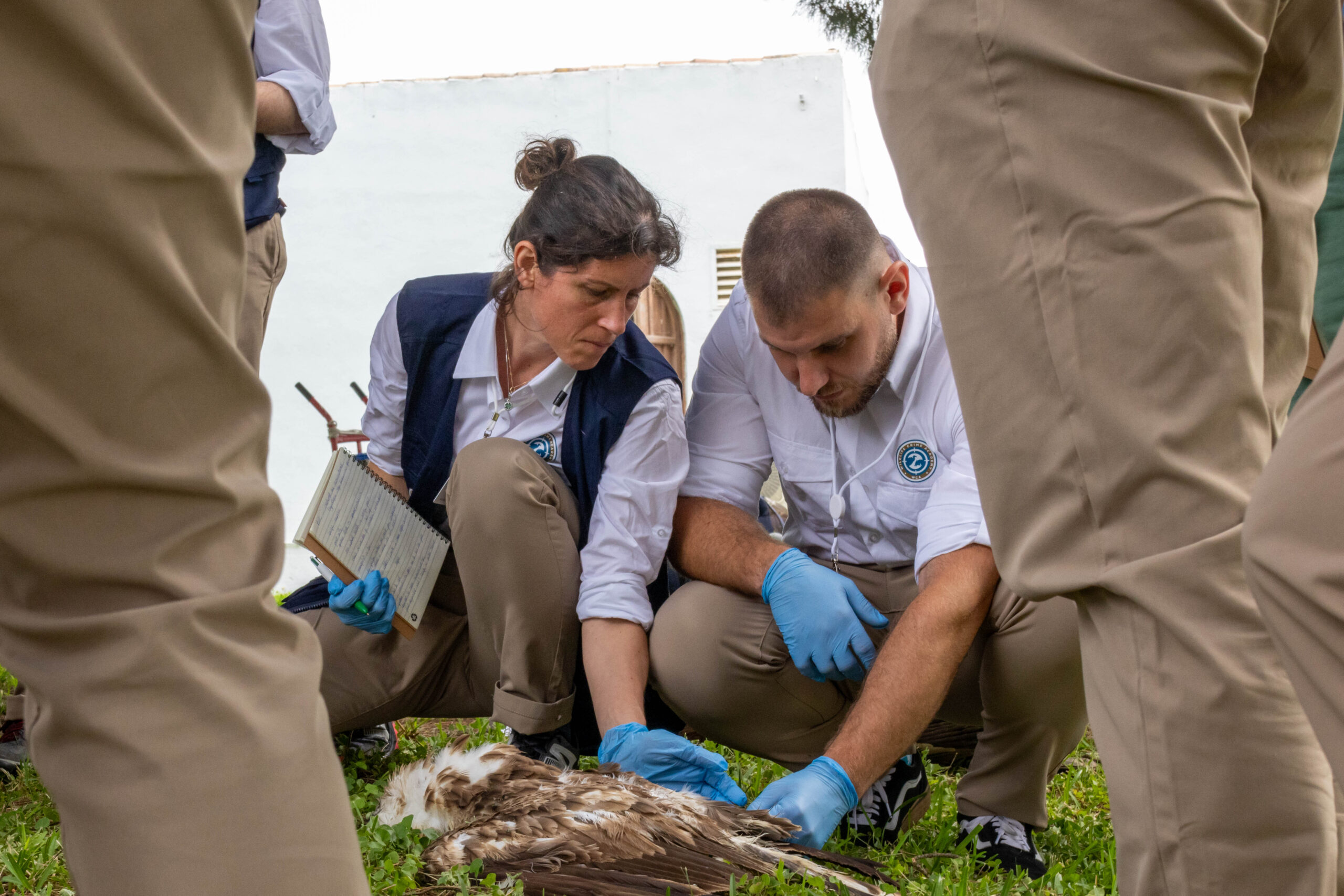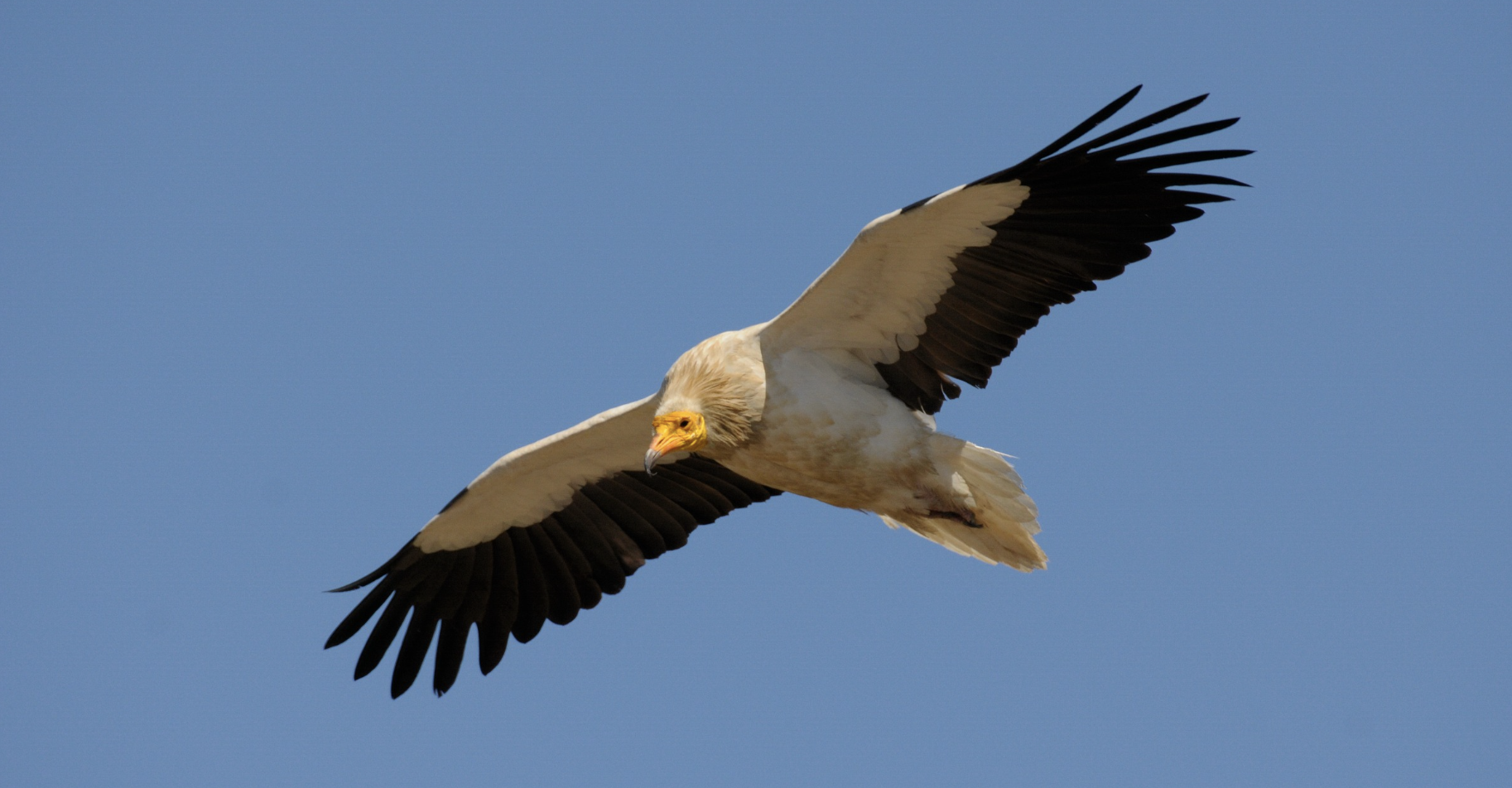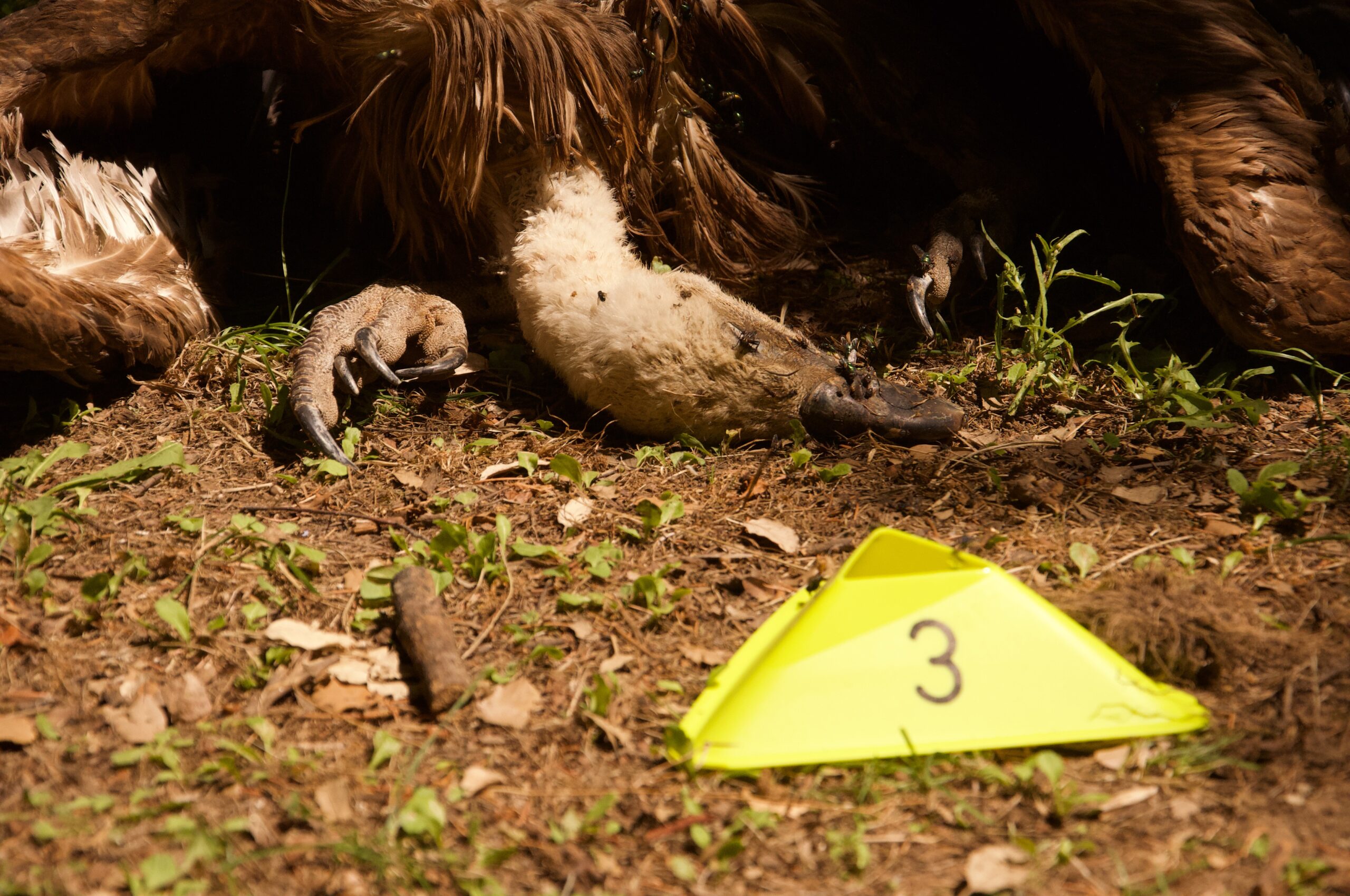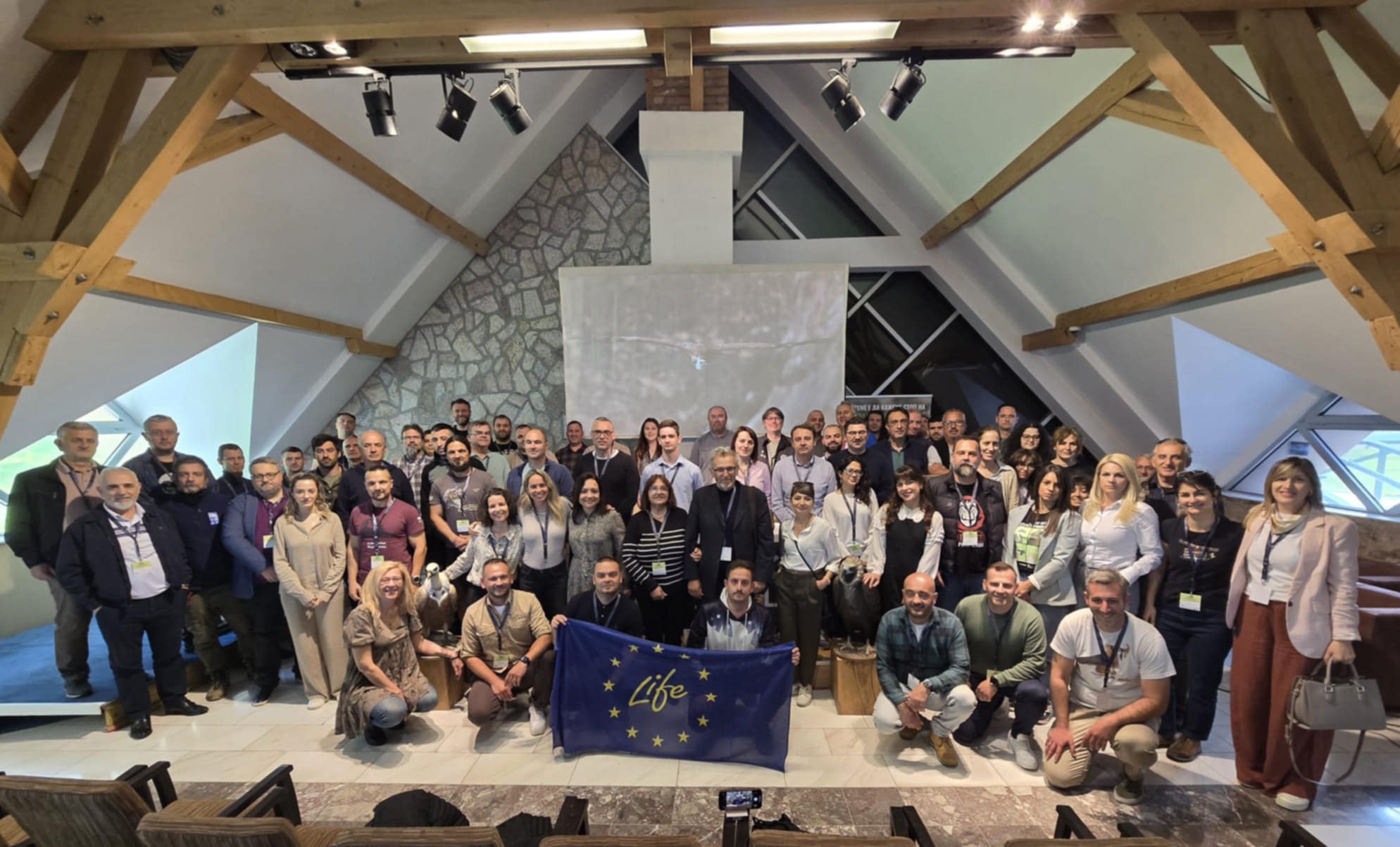
The latest poisoning incident that occurred in Fuerteventura, Canary Islands, during April 2020 poisoned at least six Egyptian Vultures and not three as it was previously reported. This incident is undoubtedly the most serious case of poisoning that took place in the Canary Islands over the last two decades. Experts claim that it is an isolated incident almost certainly attributable to a single offender, as poisoning episodes in Fuerteventura have drastically declined in recent years thanks to targeted conservation actions.
Investigating the poisoning case
The poisoning incident took place on 26 April 2020, and immediately mobilised the relevant authorities and organisations to take action. Technicians from the Egyptian Vulture LIFE Project, responsible for the conservation of the Canary Egyptian Vulture, worked side by side with the authorities, implementing the relevant protocols to search for the bait and poisoned animals, and to monitor the affected territories. From the very beginning, the Environmental Prosecutor’s Office has intervened and that is why the authorities of the Cabildo and the Canary Islands Government decided to wait until the process was finished before making any public announcements.
Only one nest with a small chick is reported to have been lost as a result of the Egyptian Vulture deaths. A total of 16 animals died from this incident — five Egyptian Vultures (three breeding adults and two immatures), five crows, 4 gulls, one pigeon and one domestic cat. In addition to those, another Egyptian Vulture was also poisoned, but it was rescued and rehabilitated in time, which resulted in its eventual release back to the wild. The vulture was equipped with a GPS tag ahead of its release for monitoring purposes. The GPS tag was what saved the vulture in the first place, as conservationists realised something was wrong and went to the field where they discovered it in distress.

The Environmental Agents of Fuerteventura swiftly sent all 16 carcasses to the Clinical and Analytical Toxicology Service and the University Institute of Animal Health to perform necropsies. On 25 May 2020, the toxicological analyses of the samples analyzed confirmed that carbofuran was used, a destructive substance banned since 2008.
Impact of this poisoning incident on the Canary Egyptian Vulture
It is too soon to determine the exact impact of this episode on the Egyptian Vulture population in the Canary Islands. Despite the severity of the case, experts estimate that the overall impact will be relatively small. This is because the numbers of Egyptian Vultures are progressively increasing in recent years, accounting to 400 birds with more than 80 active territories. Furthermore, a recently published research estimates the annual survival of adult Canary Egyptian Vulture at 93% per year, and with this incident it would drop to 91% for 2020, which is a figure still higher than that of the first years of monitoring (89%).
Egyptian Vulture conservation in the Canary Islands
The Egyptian Vulture was widespread across the archipelago in the early 20th century, but its numbers drastically declined, and in 1998 only about 21 breeding pairs remained at Fuerteventura. Thanks to targeted conservation actions ever since, the population of the Canary Egyptian Vulture (Neophron percnopterus majorensis), one of the most endangered raptors in Europe, is recovering.
In 1998, an intensive long-term monitoring programme carried out by the Estación Biológica de Doñana-CSIC detected the main threats the species was facing. These include human activities such as collision with power lines and illegal poisoning. Between 2004 to 2008, a LIFE conservation project carried out education campaigns to help minimise illegal poisoning and advocated for the modification of power lines to reduce the risk of collision to mitigate these threats. Conservationists have been monitoring the species for the last 20 years, and their analysis indicated that since the project, the survival of Egyptian Vultures has increased, especially for adult and subadult birds. Also, the population almost quadrupled between 1998 and 2020, from 21 to over 80 breeding pairs living in Fuerteventura, Lanzarote and Alegranza according to the latest monitoring carried out by the Egyptian Vulture LIFE Project.
Egyptian Vultures in the Canary Islands and Spain
All European vulture species live in Spain, Europe’s vulture stronghold. The Egyptian Vulture has two subspecies in Spain; the Peninsular subspecies is currently listed in the Spanish Catalogue of Threatened Species in the category of Vulnerable and the Canary Islands subspecies in the category of Endangered. Periodic censuses are carried out for these two subspecies by the Autonomous Communities in compliance with the Law on Natural Heritage and Biodiversity. Spain is home to the largest European population of Egyptian Vultures and is a global stronghold for the species, with SEO BirdLife’s national Egyptian Vulture census 2018 estimating 1,490-1,567 pairs.
The Canary Egyptian Vulture is the only vulture species that exists on the Canary Islands. It is an endemic subspecies, known as ‘guirre’, living in the three easternmost islands — Fuerteventura, Lanzarote and Alegranza. It is essential to continue to tackle poisoning, collisions with power lines and wind turbines, and to undertake conservation policies that address the abandonment of fields and the extensive decline of livestock to safeguard the species.



